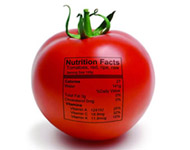Nutrition and Health Sciences, Department of

Department of Nutrition and Health Sciences: Faculty Publications
Document Type
Article
Date of this Version
2018
Citation
DOI: 10.1038/s41467-018-03390-x
NATURE COMMUNICATIONS (2018) 9:960
Abstract
Majority of disease-modifying therapeutic targets are restricted to the intracellular space and are therefore not druggable using existing biologic modalities. The ability to efficiently deliver macromolecules inside target cells or tissues would greatly expand the current landscape of therapeutic targets for future generations of biologic drugs, but remains challenging. Here we report the use of extracellular vesicles, known as arrestin domain containing protein 1 [ARRDC1]-mediated microvesicles (ARMMs), for packaging and intracellular delivery of a myriad of macromolecules, including the tumor suppressor p53 protein, RNAs, and the genome-editing CRISPR-Cas9/guide RNA complex. We demonstrate selective recruitment of these macromolecules into ARMMs. When delivered intracellularly via ARMMs, these macromolecules are biologically active in recipient cells. P53 delivered via ARMMs induces DNA damage-dependent apoptosis in multiple tissues in mice. Together, our results provide proof-of-principle demonstration that ARMMs represent a highly versatile platform for packaging and intracellular delivery of therapeutic macromolecules.
Reviewers' comments
Included in
Human and Clinical Nutrition Commons, Molecular, Genetic, and Biochemical Nutrition Commons, Other Nutrition Commons


Comments
This article is licensed under a Creative Commons Attribution 4.0 International License